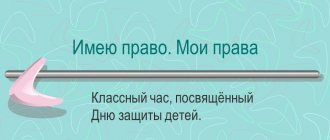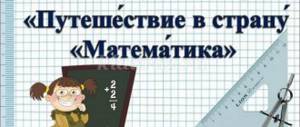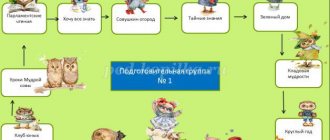Cool hours on the topic of ecology and environmental protection
Man has been in close interaction with the surrounding nature throughout his entire existence.
But his attitude towards her is not always positive. First of all, man and his activities are the main source of pollution, disasters, and environmental degradation. This leads to the need to carry out educational work among the younger generation. The school plays an important role in this process. Children must comprehend the laws of nature, master the norms of environmental behavior, and understand what the unreasonable activities of people lead to. For teachers, an option to convey this information to the younger generation will be a class hour on the topics: “Ecology” and “Environmental Protection”. The material will be interesting and relevant for schoolchildren in grades 5-7. The problem of protecting nature is of particular importance, since about 70% of the world's population breathe air that is harmful to health, and more than 25 thousand people die every year due to poor water quality.
Class hour on the topic: Ecology and human health.
Class hour: “Ecology and human health”
Target:
Formation of ecological culture and motivation for a healthy lifestyle among students
through the educational environment during the professional training of secondary vocational education teachers.
Tasks:
1. Educational: Formation of knowledge, skills and abilities in the study of subjects of the natural cycle and medical and biological disciplines.
2. Educational: Fostering environmental consciousness and ecological culture, respect for the natural environment.
3.Developing: Development of creative abilities in the preparation of extracurricular activities about the nature of the native land.
Structure:
Ecology
- the science of the relationship between man and his environment in various aspects (economic, technical, physical-technical, socio-psychological) and is intended to determine the optimal conditions for human existence, including the permissible limits of his impact on the environment.
Health
- a state of complete physical, mental and social well-being, and not just the absence of disease and physical defects.
Let's consider some issues that are closely related to human existence on planet Earth. (“Earthlings”, “Grass near the house”).
In the process of life, a person is exposed to various environmental factors, both natural and social. A competent and attentive attitude to one’s health will help a person maintain and strengthen it throughout life, and not lose it in the case of smoking, drinking alcohol, drugs and an illiterate attitude towards one’s body. The main risk factors for human health are: lifestyle. External environment, heredity, healthcare.
Today we will look at some factors related to the external environment that affect human health. And we will try to develop a concept that will help us maintain our health in the future.
1. Chemical pollution of the atmosphere and human health.
— What sources of air pollution do you know?
— What effect do gaseous substances have on human health?
— Why is the greenhouse effect a global environmental problem?
2. Biological pollution and human health.
— What airborne diseases do you know?
- What is their danger?
— What are the sources of biological pollution?
— Name preventive measures against infectious diseases transmitted by airborne droplets and intestinal infections.
3. The influence of sounds on humans.
— Is noise a source of environmental pollution?
— What are the preventive measures against noise pollution?
4.Weather and well-being.
— What are biorhythms and their impact on a person’s ability to work?
—Who are meteoropaths?
— How does the weather affect a person’s well-being, his performance and rest?
5.Nutrition and health.
— What is balanced nutrition?
— What are the nutritional features of children of primary school age?
6.The problem of human adaptation in the environment.
— What is adaptation?
— How does adaptation affect social health?
— What rules do you need to know in order to be able to adapt to the new conditions of the team?
Thus, health is a state of complete physical, mental and social well-being, and not the absence of disease and physical defects.
The famous Soviet doctor and surgeon, N.M. Amosov, who lived a long, creative life and saved many lives, wrote: “Health is the maximum adaptability of organs while maintaining the qualitative limits of their functions.”
Goals and objectives of environmental class hour
It should be noted that the class hour on the topic of nature conservation has the goal of developing a culture of respect for the environment.
Children should be introduced to the terms: environmental safety, endangered species of plants and animals, the Red Book, and talk about the main sources of pollution.
The younger generation must know how vulnerable nature is and how harmful society's impact on it can be. And of course, children, as members of society, must learn to lead an ecological lifestyle, not leave garbage, and take care of animals.
“ECOLOGY AND HEALTH” (Quiz with elements of conversation) Class hour on the topic: - presentation
“ECOLOGY AND HEALTH” (Quiz with elements of conversation) Class hour on the topic:
1. Why can canned foods be dangerous to health? ANSWER: You can be poisoned by botulinum. 2. When burning garbage, the air becomes polluted with toxic substances. Name 4 dangerous substances. ANSWER: dioxins, carcinogens, radionuclides, CO dioxide. 3. Name several methods for removing nitrates from vegetables. ANSWER: soaking, boiling, marinating.
4. Tobacco smoke contains ammonia, acetone, propylene, nicotine, pyridine and other substances. Name the substance that causes addiction to smoking. ANSWER: nicotine. 5. Name two reasons for ultraviolet starvation of plants. ANSWER: gas pollution in the atmosphere, dust. 6. What particles are formed during the decay of radioactive substances? ANSWER: particles, rays, neutrons.
7. Tobacco smoke contains many chemical compounds, substances and elements. Give their approximate number. ANSWER: about Name a substance that completely neutralizes the effect of nitrates. ANSWER: Vitamin C 9. What are pesticides? ANSWER: chemical plant protection products from pests and diseases.
10. Is it possible to get poisoned when working with aniline dyes and solvents in a respirator? ANSWER: yes, you can. The vapors of these substances are absorbed through the skin. 11. Name effective ways to disinfect water during a hike. ANSWER: 1. Boiling; 2. Add iodine at the rate of 2 drops per 1 liter. 12. Is it possible to distinguish products containing toxic substances from pure ones by their appearance? ANSWER: no. Only by special research.
13. Who is a passive smoker? ANSWER: a person in a smoky room, next to people who smoke. 14. What is the name of a group of especially dangerous organic compounds containing poison? ANSWER: dioxins. 15. When does a car emit more toxic substances? ANSWER: at idle.
16. Why are modern rains sour? ANSWER: gaseous oxides of sulfur, nitrogen, carbon, chlorine emitted into the atmosphere by enterprises are dissolved in raindrops. These are weakly concentrated acids. 17. Why is it forbidden to burn garbage, waste, and leaves in populated areas? ANSWER: because the air is polluted with toxic substances. 18. What proportion of the human body is water? ANSWER: 65%.
19. Why is the water from most reservoirs in Russia unsuitable for drinking? ANSWER: The water is polluted with waste from factories and toxic substances from the fields. 20. Which group of serious infectious diseases can be prevented by ensuring safe water supplies and sanitation? ANSWER: intestinal: cholera, dysentery, hepatitis, typhoid fever.
21. What is the main danger to the environment and human health from nuclear power? ANSWER: environmental pollution with nuclear waste. 22. Name the most toxic metal. ANSWER: mercury. 23. What chemical substances in water can prevent dental caries? ANSWER: fluorine.
24. Why is it not recommended to eat berries and mushrooms grown near roads? ANSWER: they contain toxic substances: zinc, gasoline waste. 25. Name the most powerful source of air pollution in our populated area. 26. What methods exist for disinfecting water? ANSWER: ozonation, boiling, ultrasonic treatment.
Abstract The presentation contains 10 slides with questions and answers, an abstract and information about the author. The presentation is intended for classroom teaching at middle or high school levels, and can easily be supplemented with other questions. Navigation is done by clicking the mouse. The purpose of the class is to develop students' environmental culture. The following programs were used in the work: Microsoft Word Microsoft PowerPoint
AUTHOR Ilyina Vera Filippovna - teacher of mathematics and physics, category I, MCOU "Azov Secondary School" Educational and Training Center" Yamal-Nenets Autonomous Okrug, Azov village
Associated dates
Every year on June 5, World Environment Day is celebrated all over the world, which is designed to draw people's attention to existing problems. It is accompanied by campaigns and events for nature conservation. Environmental safety becomes the number one topic on this day. By the way, the founder of the concept of “ecology” is the German biologist Ernst Haeckel, who proposed this name in 1866 in his famous work “General Morphology of Organisms.” Where he outlined the theory of the relationship of living organisms between themselves and the environment. Also important dates are World Water Day (March 22), Forest Day (September 20), Animal Protection Day (October 4).
Interesting tasks on the topic
Since the problem under consideration is universal, the most optimal form of conducting a class hour would be a round table. Several children can be asked to prepare reports at home on various aspects of the topic, for example: “Soil pollution”, “The problem of lack of clean air”, “Animals in danger”, etc. And then discuss the material discussed with the whole class and propose their own ways to solve problems. Another option would be to divide students into groups. Each group will receive a task with a specific environmental problem. Then the children discuss it together and one student from each group talks about their topic and ways to improve the environmental situation.
Environmental education of schoolchildren is the primary task of adults and, above all, teachers. It is necessary to regularly conduct classroom hours, educational events, cleanup days, visits to factories and other industrial excursions.
“Forward, along the ecological path” class hour
“Forward, along the ecological path”
The teacher explains what ecology is[2]. Environmentalists around the world are sounding the alarm: “Nature is in danger.” Man, through his economic activities, damages nature. We should not wait and remain inactive until all living things die. Now you will see for yourself that nature really needs help. I invite the participants of the dramatization to the board: “Grandfather, Grandmother, Granddaughter, Bug, Cat, Mouse.” Children dramatize the fairy tale “Turnip” [2].
Teacher: What happened in this fairy tale is the essence of our class today. hours. What should a person not do to prevent such situations from happening in life? (children's answers)
Nature surrounds us everywhere. It's not only next to our house. We are now setting out on a journey together along an ecological trail. We will look around carefully, remember everything we see and hear, we will perform interesting tasks, and answer my questions. What is nature? The teacher’s question is answered by children who have learned poems about flowers (“Violet”, “Buttercup”, “Forget-me-nots”, “Dandelion”).[3]
Teacher: Where do wildflowers grow? Where do meadow flowers grow? (placards are hung on the board - the words: meadow, field). What should a person not do if he wants meadows and fields to please the eye and benefit people?
Teacher: Now we will turn our attention to the trees. To do this, I will give you cards with their names written on them. The educational game is called "Sparrow". Words for the driver: “Chiv chiv, a sparrow sat on a raspberry, a sparrow flew onto an apple tree.” The one who called himself an apple tree picks up: “Chiv, chiv, a sparrow was sitting on an apple tree, a sparrow flew to ...” and
etc. The one who missed his name gives the card with the name of the tree to another participant in the game (3 minutes). What follows is the teacher’s message “about the lemon tree.”
Teacher: I noticed birds in the trees. Try to guess their names.
The teacher asks riddles:
“Sleeps during the day, flies at night, scares passers-by” (Owl)
“Not a woodcutter, not a carpenter, but the first worker in the forest” (Woodpecker)
“Vereschunya, white-sided, and her name is...” (Magpie)
Teacher: Animals gathered in a clearing in the forest. We need to get to know them (children, at the teacher’s request, find toys: bear, hare, fox, hedgehog). Next, the teacher himself takes a toy (squirrel) and invites 2 students (Squirrel and Nightingale) to a conversation.
Teacher: Listen to the request of Squirrel and Nightingale[2].
Teacher: What should a person not do so that there are many animals in the forest and they do not worry and trust people? (children's answers)
The teacher talks about our distant ancestors - the Slavs, who perceived the forest as a living being[5].
Teacher: The city of Moscow was built on the banks of the Moscow River. People use water from this river. What should a person not do to avoid polluting the river? (children's answers) Next is watching a short story about the Moscow River. Conclusion: the teacher picks up a globe and invites the children to talk about everything they saw. Children, reading a poem, pass a globe to each other [4].
Teacher: We are now giving advice to a person, and therefore to ourselves. I urge you to take care of nature. If every person remembers this, then our planet will be very beautiful. We will live happily. The journey along the ecological trail ends[4]. The final part of today's class. There will be a song for about an hour (all students sing a song to the tune of “I’m Walking Through Moscow”[4].
Teacher: That's it for our class. the hour is over. I ask you to repeat the words that are posted on the board. Thanks everyone for your work.





